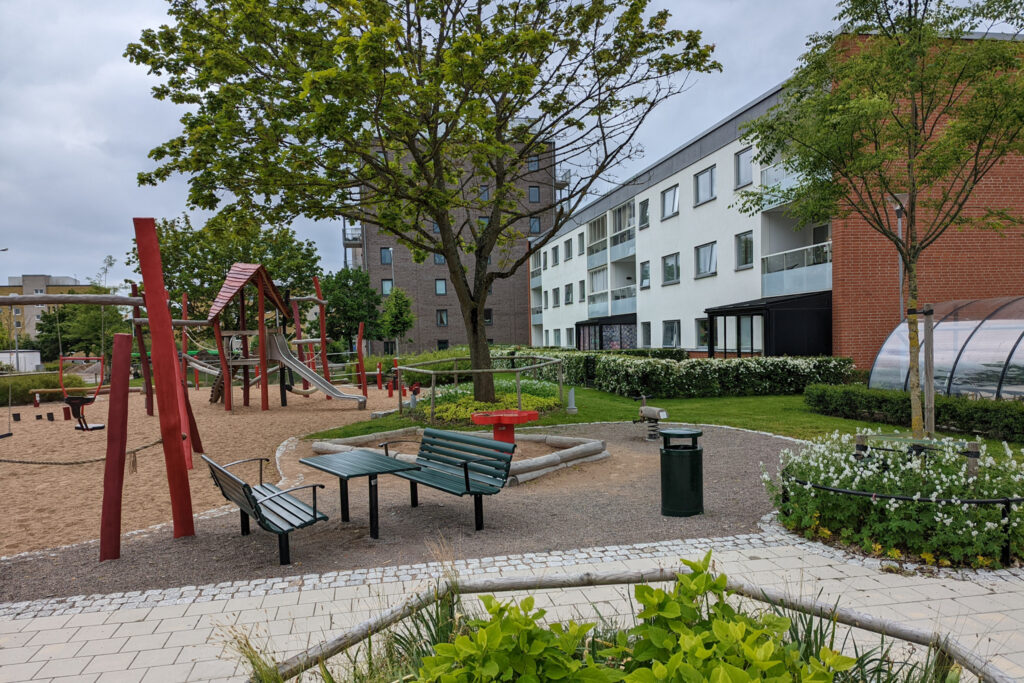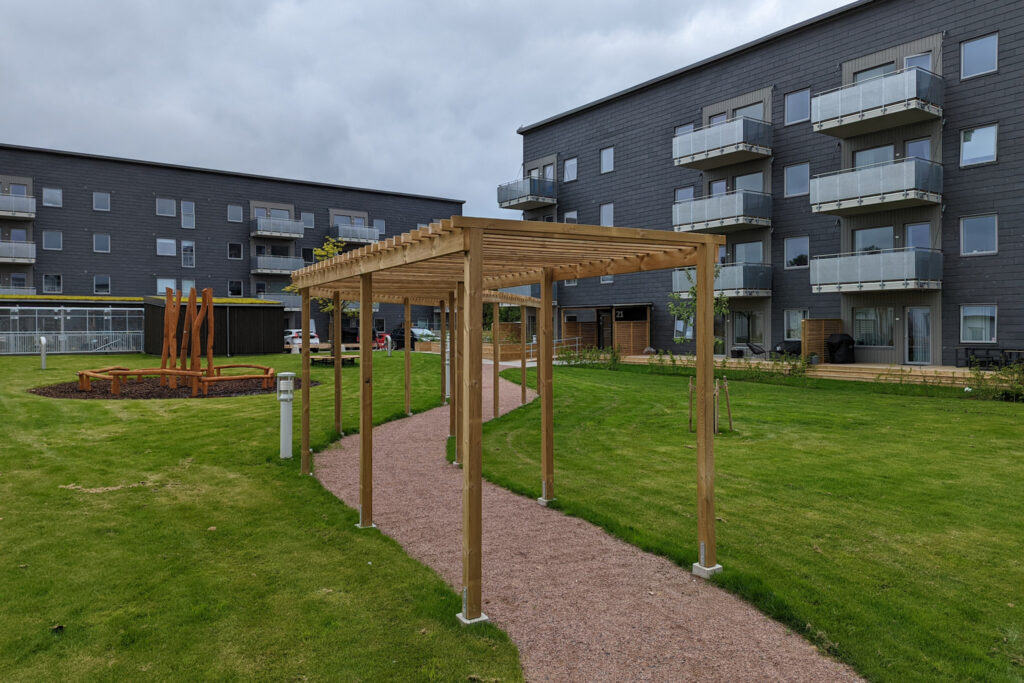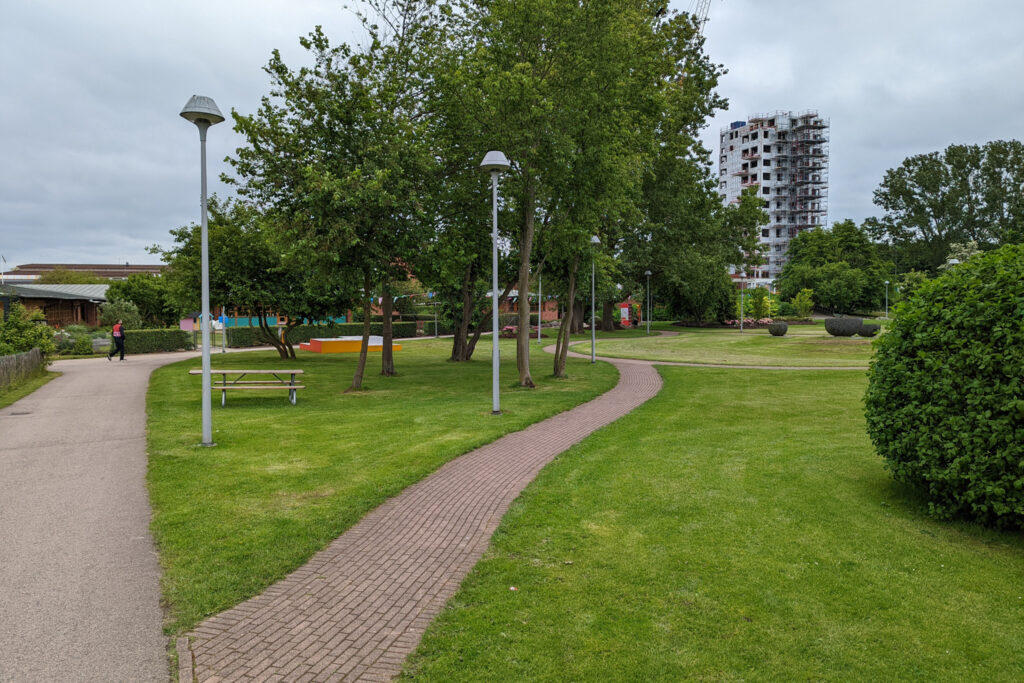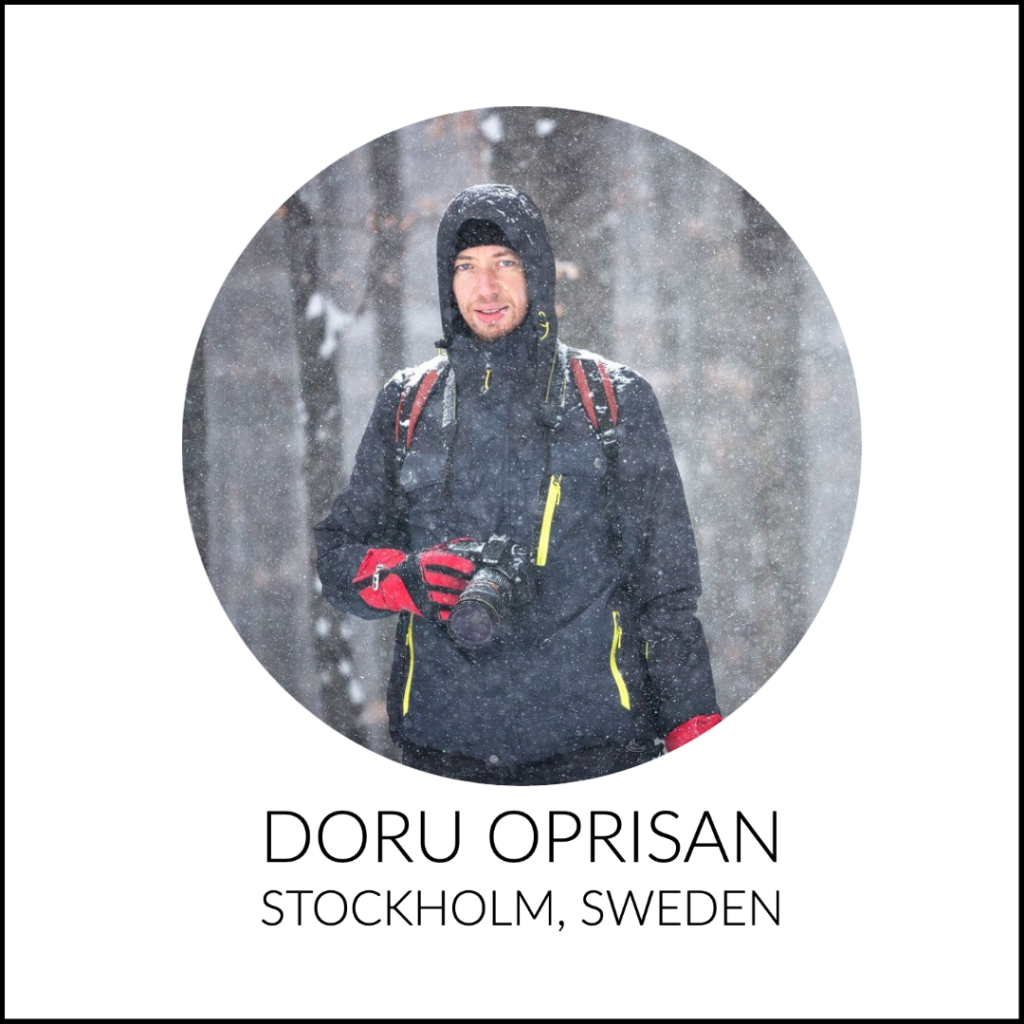By Doru Oprisan, Stockholm Correspondent at Pedestrian Space
While in Helsingborg for the Urban Future conference, I talked to Mikaela Åberg, Project Manager Urban Development, Helsingborgshem, about the daunting task of revitalizing troubled neighborhoods.

“If we can harness that and create spaces and platforms for collaboration over a long time, not just like “this is a project, let’s collaborate and let’s go create and then we leave”, but make it into a method that’s integrated into city planning. I think that’s also one of the key factors to avoid having the same problems.“
MIKAELA ÅBERG
Could you tell me a little bit about this project that you’ve been involved with for the last 11 years?
It’s called DrottningH, it’s a very broad development approach of Drottninghög, which is one of Helsingborg’s most socially deprived neighborhoods, where we work together as a municipality with authorities, with inhabitants and with the businesses, both local businesses and external developers. So it’s a very broad development approach, you could say.
Where did you start from? What were the original aims and where are you now?
Back when we started the development process of Drottninghög, we were both aiming to address the social issues of this neighborhood, addressing Helsingborg’s need of more housing, and the overall aim was to make Drottninghög a thriving part of the city, rather than this enclave in the central parts of the city, but with big problems, really.

“Everything from rent level to park spaces, playgrounds, has this element of dialogue in it, where they can see they’ve been a part of the process. So we have to keep that pace in order to keep trust and to avoid this engagement fatigue in the neighborhood.“
Mikaela Åberg
What were the main blockages along the way?
The main challenges, except reputation, were a high unemployment rate, a high level of crime, we also had a very homogenous neighborhood with only large families, a lot of newcomers to Sweden. 70% were immigrants in Drottninghög, which makes it an area that’s challenging when it comes to integration. And there were also issues of mobility and connecting Drottninghög to the rest of Helsingborg in a better way. And since today we are building on the former parking lots of the neighborhood, we have to address the mobility issue as well.
What was the mobility situation back then and what are you doing now?
The parking situation was “Park wherever you like, how many cars you want, everywhere”.
I’m so familiar with that.
So, going from there to having fewer parking spaces divided into different zones, depending on where you live, and also trying to get car ownership down and replacing it with bus traffic and different means of mobility.
“…now we have more proud and confident residents taking part in the development.“
MIKAELA ÅBERG

Was there any bus line or train line back then?
There was a bus line, which was okay, but five or six years into this process, we managed to get a better bus line, more frequent and it’s also the first HelsingborgsExpressen. It’s an electric bus that has its own lane, so it’s quicker, more frequent and the route is longer. So Drottninghög has a better connection with the city and the outskirts.
So now would you say the connectivity issue is solved or there is still room for improvement?
There’s definitely still room for improvement and especially since Drottninghög is growing, we need to scale the collective traffic. If Drottninghög is going to be twice as big, with twice as many inhabitants, we have to have more services and we have to have more varied means of transportation as well. We can’t just look at one bus line and say this is the solution.
We also have other target groups moving into Drottninghög now. Before we only had large families with the needs of large families, with family logistics, taking kids to and from school and so on. And now we have more elderly and more young people and they want different things and need different things when it comes to mobility.

“…our work in the neighborhood has enhanced female mobility, because we’ve worked so much with women and with children regarding this. I think, when it comes to the cultural feelings for the car, we have to work more with the men.”
Mikaela Åberg

I had a question related to cars, but I’ll get to that in a bit. So, one way to reduce the need for mobility is to build inside the neighborhood the workplaces and everything else. Does this place have this?
A little bit, but we are adding workplaces now as well. If you compare the amount of flats or apartments to how many workplaces there were when we started, it’s way off. We need more businesses, local places to work and to study, as the community grows. And more varied businesses as well. Today it’s basically just shops or schools.
Some population groups are more attached to their cars than others. So how did you address that? Because you said you managed to reduce the number of cars.
That is a big deal. Since we work so close with our community in Drottninghög, we’ve learned a lot about this and it has pros and cons. The fact that the car has a cultural value in certain cultures more than it does in Sweden, even if it does have a cultural value here as well. But actually a lot of our tenants have their own carpool: it’s within their family like one has a car and then the family uses it. That in itself means that there are not more cars per family But it also means that the car is important for many people, for the entire family. And we had to really work with both push and pull factors, trying to introduce new ways of transportation, talking about it, pros and cons regarding safety for the children, traffic safety, and climate as well. I don’t think we will ever get the car reduced to nothing, but definitely there’s a lot of potential in replacing most cars with other transportation methods.
I’m curious if you’ve seen tangible differences, after all this work of explaining them and adding new transportation, if you’ve seen examples of people giving up their cars, or reducing their need for cars. What worked in that case?
I wouldn’t say that we have yet, to be honest. We have seen the results of women having to learn how to ride a bike, to get a job. And that combination of learning to ride a bike, having a bike and then having a job. And that’s a huge deal. That doesn’t mean that they have a bike instead of a car. The car is still in the family somewhere, but our work in the neighborhood has enhanced female mobility, because we’ve worked so much with women and with children regarding this. I think, when it comes to the cultural feelings for the car, we have to work more with the men.

Your example is very powerful, because education starts with women and they have an important voice in every family. So, if it starts there, it can progress further. So it’s quite important. What about the feeling of safety in the neighborhood, what changed since the project started?
It’s really interesting. I’m not sure if this is the same all over Europe, but back when these neighborhoods were built, there were many questions regarding traffic safety. And they built these tunnels and these bridges over these large roads that were just for cars. So that was a way of keeping pedestrians safe. However, moving into our time, those tunnels and bridges have become unsafe spaces, because the tunnels are dark and you can’t see everywhere, and the bridges also have turned into something negative, rather than something positive in means of transportation for pedestrians.
“…the car is important for many people, for the entire family. And we had to really work with both push and pull factors, trying to introduce new ways of transportation, talking about it, pros and cons regarding safety for the children, traffic safety, and climate as well.“
Mikaela Åberg

They segregate areas because they are very large pieces of infrastructure that separate neighborhoods.
Yeah, exactly. So, in working with HelsingborgsExpressen in that project, we had to redesign a street that was a 70 kilometers per hour street before and now it’s 40. So it’s really a lot reduced. And now there are also crossings along the way, so it’s much more connected to its neighboring area, Fredriksdal, on the other side of the street, which is hugely important. Before we had these trails where people found their own way to cross this 70km per hour street, and run over it and then go down into bushes and then into a parking lot.
Sounds very unsafe.
Very unsafe. Yeah. And we don’t have that anymore now. So that’s a very big step forward.
And have you seen an increase in outdoor activities or people meeting more outside because of that?
Yes, we have definitely seen more of Fredriksdal and Drottninghög coming together and seeing each other as one, much more than before. We have different clubs, which have members from both sides, and now they have their activities both in Drottninghög and in Fredriksdal.

Nice. There was a lot of talk earlier about participation and convincing people to join all these activities. How is that working there after this period of time? Do you see that participation fatigue? Are they tired of this or not?
If we hadn’t come as far as we have in the physical transformation and actually going from talking to action, I’m sure they would be so fed up with us. We would be done. But we’re six years into the physical transformation now, so they can really see that talk leads to action and they can see how they are a part of developing. Everything from rent level to park spaces, playgrounds, has this element of dialogue in it, where they can see they’ve been a part of the process. So we have to keep that pace in order to keep trust and to avoid this engagement fatigue in the neighborhood.
I imagine that, at least in some cases, their behavior changed, some of them are responsible now for some parts of the neighborhood, right?
Yeah, and proud. And the way I experience it, they have more confidence in the dialogue process as well. You don’t see as much “I don’t know why you ask me, because I don’t have any education and I’m not your person to talk to”. Instead, now we have more proud and confident residents taking part in the development.
And that’s important because pride is also part of identity and an important one.
Yes, absolutely.

One last question and I think it’s the most important topic in the long term: how do you make sure we’re not repeating the same mistakes made 60 years ago, and in another 60 years, have the same situation where they’re going to start all over again. I think it has a lot to do with prices and the fact that we cannot control the housing market. This is a shame, because I think there needs to be some discussion about the economic model. But how do you make sure that it doesn’t become another poor and problematic neighborhood over the years? Or, if you build new fancy places and the prices increase and you drive those people away, what happens? How do you avoid all this?
This is the million-dollar question, I guess. I think one part of the answer is to stop building homogenous neighborhoods. Stop building one size fits all neighborhoods. Because, when you take Helsingborg as an example, we have homogenous neighborhoods that are just expensive large houses, 10 million dollar homes only, and we have the socially deprived neighborhoods which are only rentals, only apartments for the poor. I think every neighborhood can have someone who’s really rich and someone who’s really poor and everything in between. We as a society, we can handle that, but we can’t handle everything there and nothing there. So, I think part of the answer is to not build too much of the same thing, as we densify our cities. But that’s only a small part of the answer, of course.
To a certain extent, we are more individualistic now than we were 60 years ago, but as inhabitants, we demand more to be a part of. We don’t put our trust into the municipal or authorities hands in the same way anymore. So I think there’s a potential there. If we can harness that and create spaces and platforms for collaboration over a long time, not just like “this is a project, let’s collaborate and let’s go create and then we leave”, but make it into a method that’s integrated into city planning. I think that’s also one of the key factors to avoid having the same problems.
“If Drottninghög is going to be twice as big, with twice as many inhabitants, we have to have more services and we have to have more varied means of transportation as well. We can’t just look at one bus line and say this is the solution.“
Mikaela Åberg
This now became another question. Now people tend to be choosing their clubs more. They choose their own Facebook feed, they only see what they like. We are different groups and we only stay with the people we like and we tend to live in the neighborhoods where the people are more like us.
Yes, it’s definitely a problem.

So, going back to homogeneity in the neighborhood, that’s clearly a good thing, to have mixed usage and mixed sizes. But how do you turn that into a reality? Because there are financial interests, there are also the people that would like to be with their own kind in terms of wealth and so on.
I think a large part of making that into reality is not only to address the socially deprived areas as a problem, but also to address the thriving middle class and over, as a problem. And actually, in terms of an example, when we had the migration crisis, we decided to build temporary apartments very quickly for migrants in the most wealthy areas of Helsingborg. That was a tough decision. And, of course, Nimby: “Not in my backyard, put them somewhere else. I own a property here, don’t come here with that.” But as it turned out, since we did it small scale, it was only 10 or 15 apartments per place and that proved our thesis, that in small scale, socially deprived or socially challenged establishments are not a problem. We can handle that. That doesn’t mean that someone is going to set fire to your neighborhood or anything like that, but you have to make that decision and then you have to stick to it and also follow it up. That’s a good example, dare to do that. So don’t just talk about socially deprived areas as a homegeneity problem, but also talk about the wealthy suburbia.

I think this is key, the small scale, because that way you kind of force them to integrate upwards and not the other way around.
Exactly.
Read more about this project on the official page.

Doru worked for many years as a radio journalist and a photographer in Bucharest, Romania, before recently moving to Stockholm, Sweden. The traffic situation was one of the reasons for the move, and it also pushed him into studying urban mobility. As a pedestrian and also a passionate cyclist, he is determined to use his communication and photo abilities to try and shift mindsets in a healthier direction while potentially carving a new career for himself.
Read Stockholm Correspondent Doru’s content here
Read about the Global Walkability Correspondents Network here

